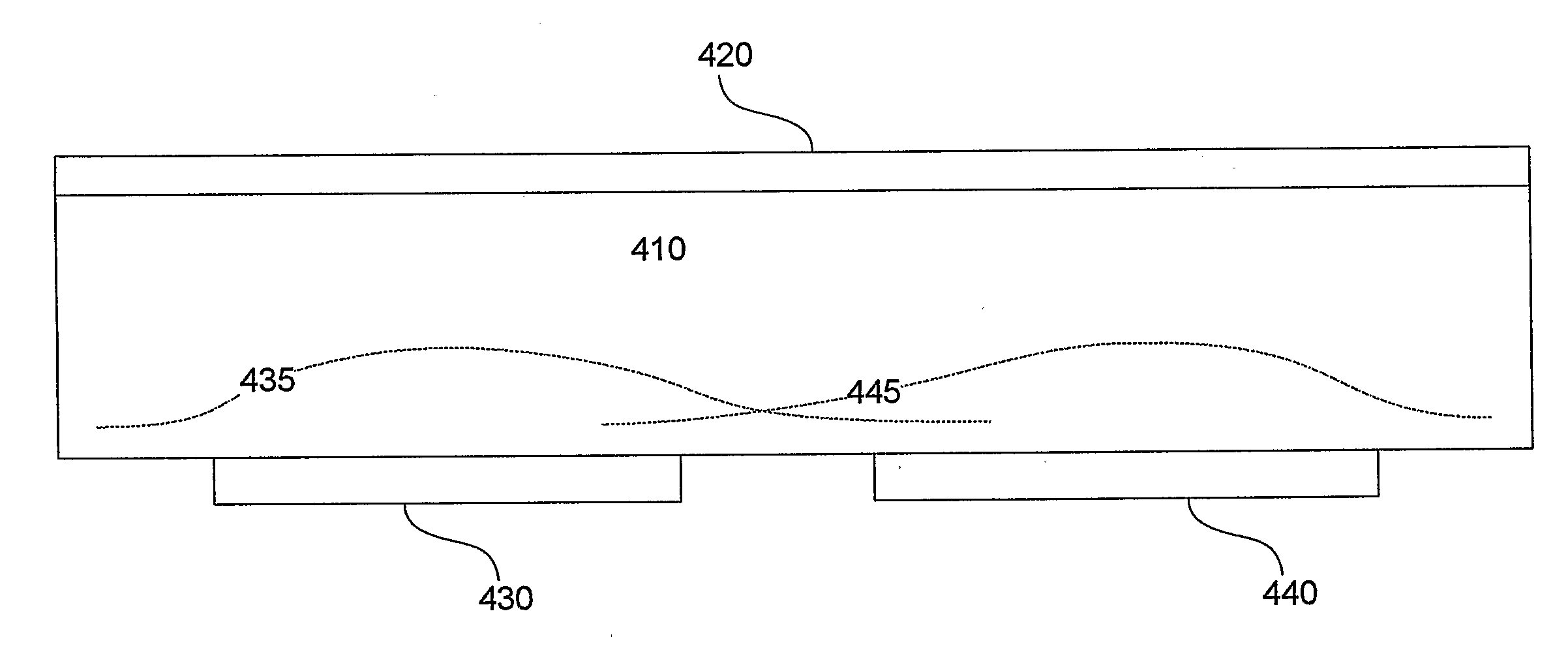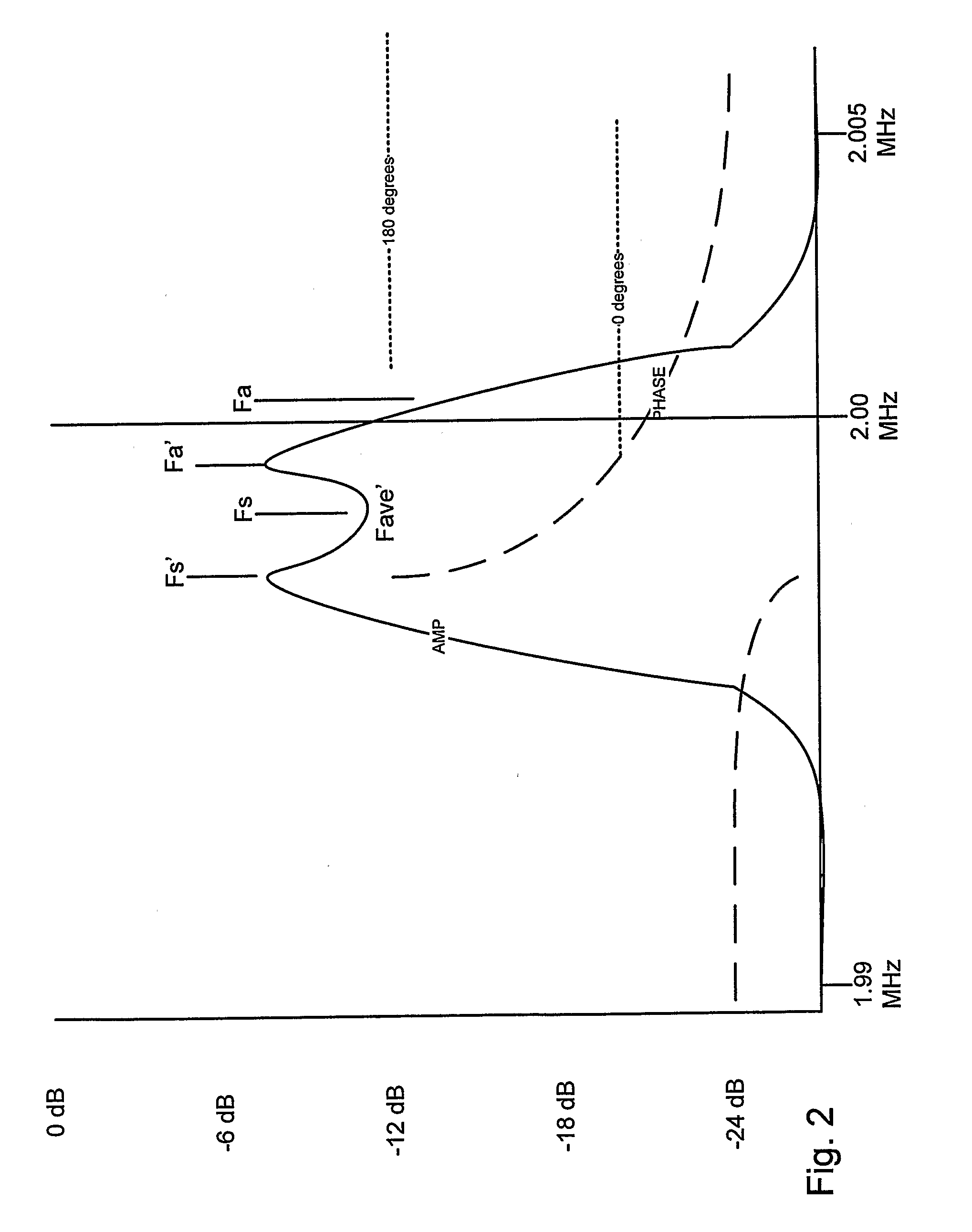Measurement of density and viscoelasticity with a single acoustic wave sensor
a technology of density and viscoelasticity, applied in the direction of instruments, specific gravity measurement, measurement devices, etc., can solve the problems of inability to support a shear sound wave, no good method of continuously monitoring the property, and ideal liquids without shear elasticity nor viscosity
- Summary
- Abstract
- Description
- Claims
- Application Information
AI Technical Summary
Benefits of technology
Problems solved by technology
Method used
Image
Examples
Embodiment Construction
[0039] It is an important object of the present invention to provide a method of obtaining the measurements of density and of density-viscosity product, in a single sensor with essentially simultaneous measurement. The aspects of the invention are equally applicable to any shear horizontal (SH) acoustic wave device used to implement the sensor, whether it employs the bulk acoustic wave (BAW) parallel plate resonator, SH acoustic plate mode (SHAPM) parallel plate waveguide, or the SH surface acoustic wave (SH-SAW) planar device structure (commonly known as a Love wave device).
[0040] The invention is equally applicable to any acoustic wave device not having SH wave displacements but still having acoustic wave amplitudes confined primarily to the surface plane of the acoustic wave device prior to texturing. It is further applicable to flexural plate wave (FPW) devices employing the slow mode of a thin membrane using either piezoelectric, magnetic, or any other convenient method of aco...
PUM
 Login to View More
Login to View More Abstract
Description
Claims
Application Information
 Login to View More
Login to View More - R&D
- Intellectual Property
- Life Sciences
- Materials
- Tech Scout
- Unparalleled Data Quality
- Higher Quality Content
- 60% Fewer Hallucinations
Browse by: Latest US Patents, China's latest patents, Technical Efficacy Thesaurus, Application Domain, Technology Topic, Popular Technical Reports.
© 2025 PatSnap. All rights reserved.Legal|Privacy policy|Modern Slavery Act Transparency Statement|Sitemap|About US| Contact US: help@patsnap.com



